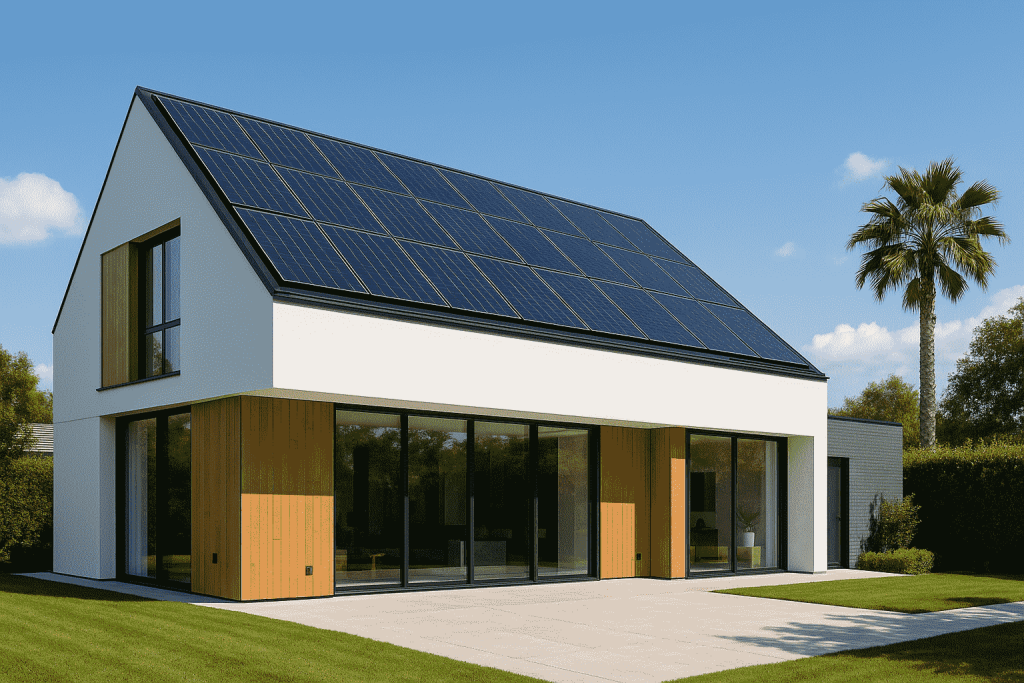From Efficiency to Generation
For decades, architects have tried to make buildings more energy-efficient. The next evolution goes further: energy-positive homes don’t just save power — they create it.
Using solar façades, geothermal systems, and integrated storage, these homes export more energy than they consume, turning each residence into a miniature power plant.
In Florida, where sunlight is abundant and energy costs are rising, this idea is becoming both ecological and economical.

Designing for the Sun
Energy-positive design begins long before the first solar panel is installed. Explore carbon-negative construction materials that complement energy-positive architecture. The orientation, shape, and materials of a building determine how much energy it can harvest.
Architects are now using AI tools to simulate sunlight exposure throughout the year, ensuring every surface captures maximum radiation.
Smart shading, dynamic glazing, and ventilated façades help maintain thermal balance — keeping homes cool in Florida’s heat while still harvesting solar energy efficiently.
Storage: The Invisible Engine
The biggest challenge of renewable energy isn’t production — it’s storage. That’s why the new generation of energy-positive homes uses advanced battery systems integrated directly into their structure.
Some models use walls embedded with graphene supercapacitors, while others connect to community-scale energy banks that share power between households.
In smart neighborhoods, your roof might power your neighbor’s car, and their battery might keep your home running at night.
Architecture Meets Infrastructure
Energy-positive design is transforming the relationship between home and grid.
Instead of drawing electricity from a central source, homes now form microgrids — self-sufficient, adaptive systems capable of operating independently during blackouts or natural disasters.
This model is especially relevant in hurricane-prone areas like coastal Florida, where resilience and autonomy have become essential parts of modern luxury. Discover hurricane-resilient housing solutions designed to protect Florida’s coastal communities through innovation and design.
Beyond the Numbers: Aesthetic Sustainability
The beauty of energy-positive design lies in its invisibility. Roofs that look like art installations, façades that shimmer like glass but act like solar farms — technology disappears into form.
The goal is no longer to display sustainability, but to embody it. The most luxurious homes of the future will not announce their efficiency; they will be efficiency itself.
The Economic Revolution of Energy Independence
As governments introduce incentives and energy companies shift toward decentralized production, homeowners are beginning to view energy-positive architecture not as a cost, but as an investment.
In Florida, the payback period for high-efficiency homes is shrinking rapidly thanks to solar tax credits, net metering, and advances in photovoltaic materials. What was once futuristic is now financially rational.
Living Beyond Neutral
Carbon neutrality was once the goal — now, the ambition is positivity.
Energy-positive homes symbolize a new era of environmental optimism: where architecture gives back more than it takes.
The future of design is not about doing less harm, but creating more good.

